Rome and its attendant barbarians have come to serve as such comfortingly familiar symbols of qualities with apparently perpetual relevance to human affairs, that no amount of scholarly research or well-intentioned political re-contextualisation is likely entirely to rescue them from their accustomed mythic status.There are various reasons why a good European might seek to shut down the Romans-versus-Barbarians fixture confrontation — roughly corresponding to the reasons why, no matter how little scholarly encouragement it receives, its memory is sporadically re-animated.
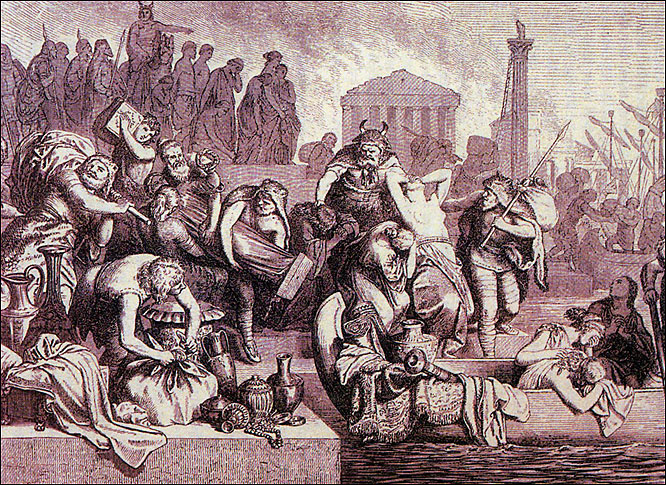
''Too Convenient to be True... Classic image of "rape and pillage". The melodrama hides the insidious and corrosive influence of the Church on several generations of weak-minded Roman princes. It is now clear that the migrating tribes, often desperate and on the verge of starvation, had a code of morality and humanity superior to the degenerate Romans. With wagons and cattle, their movement was less of an "onslaught" than a pitiful trek.'' ( www.travelers-digest.com )
Needless to say, there are implications in all of this for present-day Europe, its interactions with other faiths and cultures encountered not only abroad but, increasingly, within its own borders as well. The proof has not been that reassuring despite efforts of writers like Jean-Jacques Aillagon who imply that the history of Western Europe, although clearly not without the odd violent incident or moment of social trauma, is pointed towards a broadly happy, wholesome ending.Perhaps with a few bumps on the road as Hannah Arendt termed the ”pulse” of history.
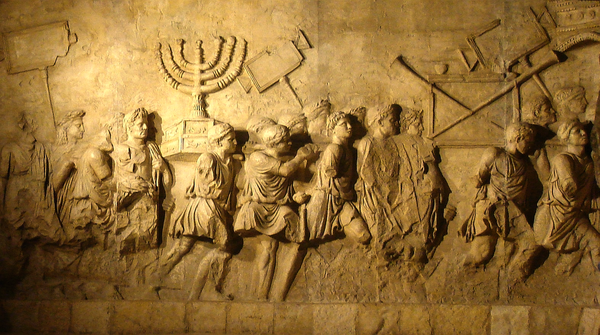
''Most likely, the menorah was looted by the Vandals in sacking of Rome in 455 CE, and taken to their capital, Carthage. The Byzantine army under General Belisarius might have removed it in 533 and brought it to Constantinople. According to Procopius, it was carried through the streets of Constantinople during Belisarius' triumphal procession. Procopius adds that the object was later sent back to Jerusalem where there is no record of it, although it could have been destroyed when Jerusalem was pillaged by the Persians in 614.''
Most striking is the image that Aillagon evokes of a present-tense Europe enduringly proud of its Roman roots, yet still too quick to repress the memory of its barbarian heritage. The defiant use of the heavily-loaded term ‘barbarian’ constituting, I guess, a faintly modish attempt to reclaim and reformulate its implications, until, he hopes or imagines, we arrive at a point where calling something ‘barbaric’ will evoke not thuggish brutality underpinned by ignorance and credulity, but rather good manners, engaging cultural diversity, and clear and grammatical speech. At that point we may be a junction of history revisionism as an art form, since the evidence may support the desire.
What had led to the fall of Rome was a failure not so much of Roman arms as of Roman diplomacy. Once Alaric was dead, his successor, Atawulf, proved willing to enter negotiations. The Visigoths took service with the Roman emperor Honorius onve more and were sent into Spain, which they helped defend against the Vandals, and into souther Gaul, where they fought against the Huns. From Gaul they were ultimately expelled by the Franks. The Visigoths is Spain, however, converted from Arianism to Catholicism in 587, and thereafter they merged with the people of Spain, whose language they had already adopted. Goths continued to reign until the Arab invasion destroyed their kingdom in 711. Even today the nobility of Spain boasts of Gothic descent.
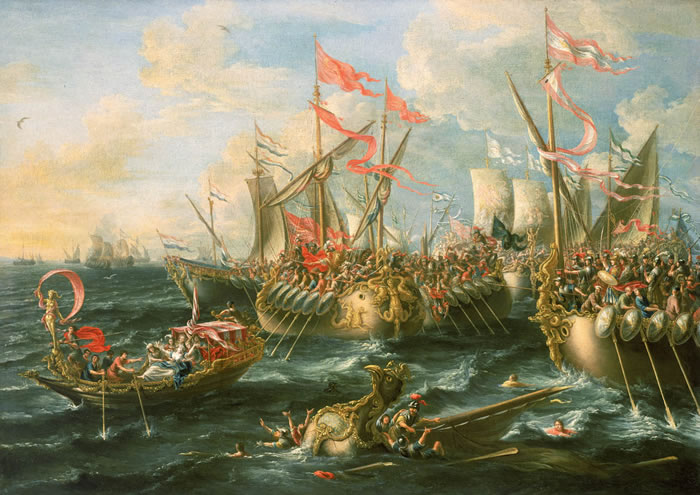
''Playwrights, poets, and film makers have portrayed Octavius Caesar as the antagonist who was one of Antony's fellow triumvirs and the future first emperor of Rome. However, serious military historians realize that the real tragedy was revealed in the battle of Actium where Anthony and Cleopatra were done in by Antony’s foolish battle tactics, Cleopatra’s premature departure from the naval battle, and Octavian’s superior generalship. Read more at Suite101: The Battle of Actium: Antony, Cleopatra, and Octavian http://ancient-military-history.suite101.com/article.cfm/the_battle_of_actium#ixzz0pbpOMRIk''
The vandals next entered Spain. Driven from the Pyrenees by the Visigoths, they held their ground in southern Spain for a time, but the united power of Visigoths and Roman Spaniards was too much for them. They decided to go on to North Africa, and thus they carried out Alaric’s dream. Although it was forbidden on pain of death by Roman law, to teach barbarians how to build ships, the Vandals had not forgotten their Baltic heritage.
They seized the vessels of fisherman, constructed ships of their own, and in 429 sailed across the straight of Gibralter to Tangier. The Romans, unable to defend North Africa, adopted their usual solution of offering an alliance to the barbarians. Gaeseric, the Vandal king, accepted, and within ten years he had built up an independent vandal state under nominal Roman rule, with Carhtae as its capital. Vikings before their time, the Vandals became a notable naval power that badly hampered Roman commerce.
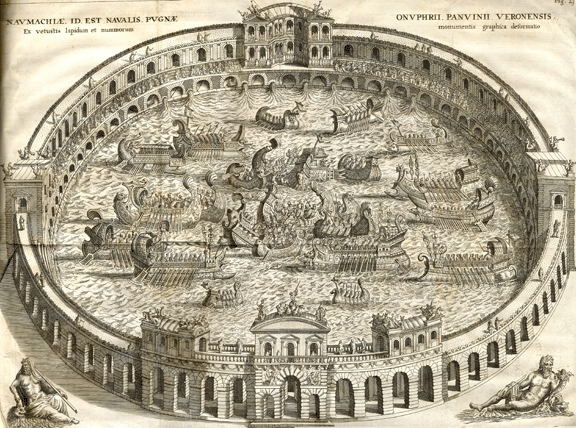
''Reflecting his interest in Greek anad Roman sporting events, this engraving depicts
rocious naval battle in the coliseum of Verona, Italy.'' ebling.library.wisc.eduIn the middle of the fifth century, invited by a faction in Rome, the vandals invaded italy from the south. The newest assailants from Carthage were more successful than their Punic predecessors had been. In 455 they duplicated Alaric’s feat of sacking Rome, but did little to justify the reputation for wanton destruction that had become associated with their name. As a matter of fact, the word ”vandalism” seems to have been used first in the eighteenth century by the Bishop of Blois, who compared the destruction caused by the Jacobins in the French Revolution to the supposed crimes of the Vandals fourteen hundred years before.
”The Romans were already terrified, sending their wives and daughters away to safety. The gates of Rome couldn’t cope with the number of people seeking to flee. Emperor Maximus had no chance to raise his army in defence of his capital and decided to ride out of Rome. Unfortunately for him, an angry Roman crowd recognised him and stoned him to death. This emperor had reigned for just 70 days. Three days after Maximus’ death, unopposed, King Gaiseric stepped ashore at Ostia.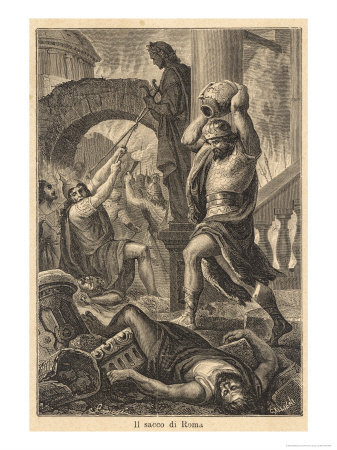
For the fourth time in less than half a century, a barbarian stood at the gates of Rome. Fearing for the safety of Rome, Pope Leo I decided to speak with the leader of the barbarians on the behalf of his city. He was met by King Gaiseric and persuaded him not to burn and slaughter. Gaiseric decided to give certain promises: there would be no killing, no torturing to discover the location of hidden treasure and no destruction of buildings, public or private. On these terms the gates of Rome were wide open to him allowing him to enter teh city with no ressistance. The Vandals plundered for two weeks. While Gaiseric stayed at the Imperial palace, his men took all the treasures, statues, Solomon’s Temple (menorab), even part of the gilded roof of the Temple of Jupiter Capitolinus was removed. Yet his greatest prize were Empress Eudoxia, her two daughters, Eudocia and Placidia, and Gaudentius, the son of Aetius. Everything was carted to Ostia, loaded into the waiting ships, from where he and his men departed in good order and sailed back to their stronghold in North Africa. The people of Rome and its buildings were left unharmed (if indeed this story was true).” www.roman-empire.net
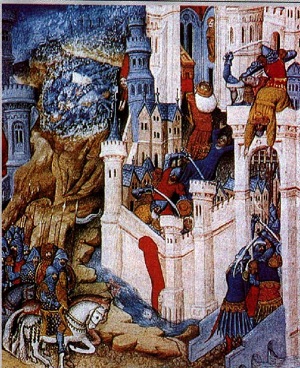
Sack of Rome in 410 by Alaric the King of the Goths. Miniature from 15th Century. Public Domain. Courtesy of Wikipedia.
The Vandals actually adapted with remarkable swiftness to Roman civilization. In North Africa they appointed Arian bishops for the major cities, abandoned their own language in favor of Latin, and took up the Roman customs of baths and circus spectacles. Within two generations they were displaying an interest in literature and even theology. But their kingdom did not survive long enough for any true cultural flowering. It collapsed like a house of cards in 533 when Belisarius, Justinian’s great general, invaded North Africa. Belisarius captured Carthage within two weeks of his landing, and in a year’s time he had destroyed the last vestiges of Vandal rule. Many Vandals took service in the Byzantine army, adding another element to the great ethnic melting pot that the Eastern Roman Empire had become. The Vandal nation vanished from history, leaving behind only a rather unjustified bad reputation, though perhaps far from a good one. In Arendt’s terms their destructions may have been ”a banality of evil” , but slaughter cruelty,and pillage may have been all that could be expected of them, though the actions were far from banal.
“Real-life barbarians (were) eager to settle down and savor the fruits of civilization: to defeat the enemy, tax him, visit his doctors, marry his daughters.” R. Wright (Nonzero: The Logic of Human Destiny)
”The Christians have always lied – and one of their biggest lies remains that of “blaming the barbarians” for the destruction of ancient civilization which they themselves caused.
The example was set from the top, where the Christian bishops established mind control over the weak and superstitious scions of dynastic monarchy. Most of the 4th century emperors had little in common with the military strongmen who had frequently seized power a century earlier. The feeble sons of Constantine were followed by the equally feeble sons of Valentinian and Theodosius. Tutored from infancy by scheming churchmen, these vicious and ‘pious’ adolescent emperors essentially waged civil war on their own subjects. The one bright exception – Julian – who jettisoned his purported Christianity the moment he became Augustus, was assassinated (probably by a Christian soldier) within three years.
The Roman patrician class moved wholesale into the higher ranks of the Church when financial penalties made it prudent, and penal legislation made it imperative, to abandon paganism. By and large, the bishops of western Europe were the old Roman aristocracy wearing a new hat. With imperial approval, the Church expropriated for its own purposes more and more of the wealth of the empire – yet ultimately it became indifferent to the fate of the empire; Holy Mother Church was all that mattered.
With the willingness of the Roman elite to engage the invader seriously eroded, the only alternative defender was the hired barbarian, one under increasingly autonomous tribal chiefs. When these mercenaries failed, the enemy was bribed into a temporary quiescence. A degenerate age used the accumulated wealth of a millennium to buy time – and then spent that time on building a plethora of churches, on convening protracted councils to resolve hairsplitting nuances of theology, and to the persecution of internal dissent.”



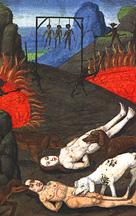




 COMMENTS
COMMENTS
Great story.
If the Vandals were Baltic, like I hear the Fir Bolg and Belgae and Bulgarians already were, that’s another reason to be proud of my lithuanian heritage!!